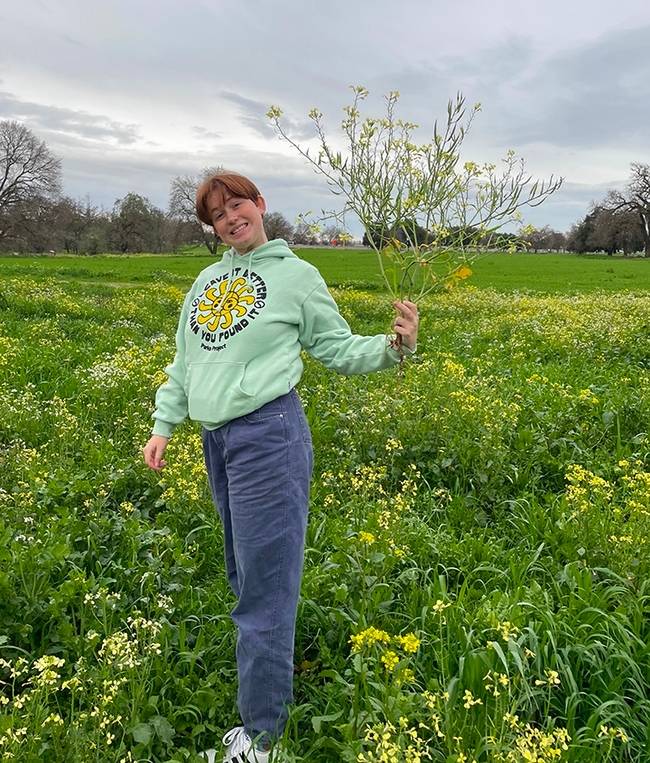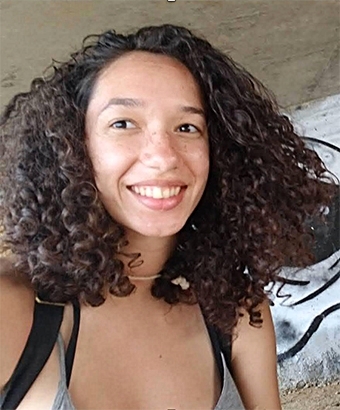
They're among the most recognizable of insects. And excellent predators of aphids and other soft-bodied insects!
"There are about 5,000 different species of ladybugs in the world," according to National Geographic. "These much loved critters are also known as lady beetles or ladybird beetles. They come in many different colors and patterns, but the most familiar in North America is the seven-spotted ladybug, with its shiny, red-and-black body. In many cultures, ladybugs are considered good luck."
Morgan Myrhe, a UC Davis graduating senior in entomology who won the Citation for Outstanding Performance in Entomology at her commencement last week, says that in elementary school, she frequently brought "ladybugs into the classroom" in her pockets and "established a worm club with her friends."
Morgan, born and raised in San Diego, said her educational journey followed a nontraditional path. WIth very limited high school experience due to a severe illness, she began attending Palomar Community College at 16 years old. While in community college, she worked at the San Diego Zoo Safari Park and had her two children, Galileo and Esmerelda.
Morgan currently works as a math and science tutor at Pioneer High School and as an undergraduate research assistant in the Ian Grettenberger lab at UC Davis. She plans to obtain her science teaching credentials and master's degree in education and to "continue exploring my love for entomology by introducing my future students to the subject."

Katherine "Katie" Hostetler, named the Outstanding Senior in Entomology, remembers "gardening with my mom and picking up snails, isopods, and other creatures while playing in the dirt. I also volunteered at the local botanical garden in high school, which confirmed my interest as I got to hang out with insects while gardening!"
Professor Sharon Lawler, an aquatic entomologist in the UC Davis Department of Entomology and Nematology who retired in January, nominated Katie for the award. "I worked with Katie through the Research Scholars Program in Insect Biology (RSPIB)," Lawler said. "She participated in graduate student Kyle Phillip's project on how wetland plant decomposition supports aquatic food webs in the Sacramento-San Joaquin Delta (Suisun Marsh). Katie rapidly became an essential member of the research team, which included John Durand as a principal investigator and Kyle's co-advisor."
"Katie learned numerous techniques in aquatic ecology," Lawler said. "She ultimately designed and led her own laboratory experiment on how amphipods contribute to nutrient recycling in wetlands through shredding and consuming different kinds of detritus. She is working on a draft manuscript for a peer-reviewed journal stemming from her work."
Katie plans to remain in Davis and "continue working at the Center for Watershed Sciences in invertebrate research!"
Congratulations to Katie and Morgan!
Attached Images:
